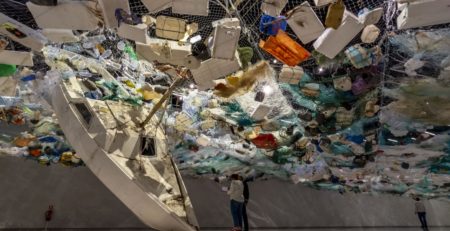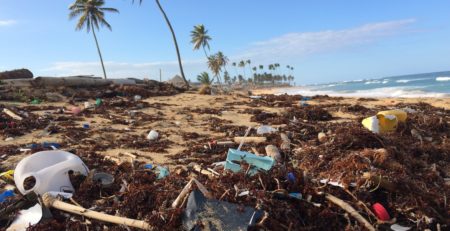We’re Drowning In Plastic
We’re always hearing how bad plastic is for us and the environment, but what is it that makes plastic such a terrible material? If it goes in to landfill, what’s the issue? We’re going to explore plastic and the damage it does to us, our environment and all our wildlife; land and sea.
So, what makes plastic such an extreme pollutant? Plastic varieties are cheap and durable, which makes it the ideal material for manufacturers. With plastic being in (or wrapped around) just about everything, there is a high demand for production, which brings more and more plastic into our environment every day. 2018 statistics show that 380 million tonnes of plastic are produced globally every year and the estimated life span of plastics ranges from 450 years to 1000 years+. Most of this plastic is single use, which means it serves no purpose after its initial role. Things like plastic bags, chip packets, cling wrap, straws, food packaging and coffee lids all fall into the single-use plastic pile, and this is just the start of it! Think about what you use in a day. How much plastic is in your every-day routine? Now think about that multiplied by the 7.53 billion people that inhabit this Earth. Gets pretty scary, right?
Now, because plastic is basically resistant to natural degradation, that means that all this plastic we use doesn’t go away. The first straw you ever used? Probably still hanging around somewhere on this Earth. I’m sure you’re starting to see the issue, here. When plastics enter the ocean, they very slowly start to break down. Not in a disappear kind of way, more so a make-hundreds-more-tiny-plastic-pieces kind of way. These tiny plastic pieces get eaten by fish and sea mammals and eventually, by humans. Yum! A lot of the time, these sea creatures die because their bellies are full of plastic which they cannot digest and end up starving to death.
While these plastics are breaking apart and wreaking havoc on our marine life, they’re also poisoning our water ways and oceans. When they break apart, plastic products start leaking the chemicals that were used to create them, such as BPA (BPA is linked to infertility and is known to disrupt hormonal processes) and chlorine. The same happens in landfill sites; plastic starts to break down and these chemicals leech into the ground, poisoning ground water, which poisons the wildlife who depend on that water to survive.
The breaking down of plastic doesn’t just affect the land, it also plays a big role in global warming and our greenhouse gases. When plastics start to degrade, they release toxic gases such as methane. Methane is naturally found in our mix of greenhouse gases and we need this to lessen the suns rays, but an overdose of methane causes the heat to get trapped Earth-side of the atmosphere, significantly contributing to climate change and global warming. Here, we have a vicious cycle. Plastics release toxic gases when they are exposed to direct sunlight and high heats. These gases contribute to global warming, which heats up the Earth. Plastic releases these gases in high heat…
Let me hit you with some cold, hard numbers about plastics, supplied by a must-watch series, ABC’s War on Waste:
- 10 million– The amount of plastic bags Australia uses every day. (Episode 1)
- 2050– predicted to have more plastic in the ocean than fish by the year of 2050. (Episode 1)
- 15– the minutes it took to fill a ‘massive bag’ with bottles removed from the Yarra river in Melbourne. (Episode 4)
- 3 billion– the tonnes of plastic that has been generated by humans. (Episode 5)
- 660 thousand– the tonnes of plastic waste created by Australians each year. (Episode 5)
- 1 million– the number of plastic bottles purchased every minute around the world. (Episode 5)
- 200 thousand– The number of bottles that are recycled around the world- 20%. (Episode 5)
- 5– the tonnes of plastic waste found in the Yarra River this year. (Episode 5)
- 5 Billion– the number of straws thrown out in Australia every year. (Episode 5)
In 32 years from now, we will have more plastic inhabiting our oceans than we will fish if we don’t act now. That thought is completely terrifying. There’s already a crisis with marine animals, with 700 different species found to have ingested some variation of plastic. What will those numbers look like in 32 years? In 10 years? We are on the verge of a plastic Armageddon if we don’t act now, and that change begins with you.
Join the Eco Buddy in the fight against plastic, and help save our planet from irreversible destruction before it’s too late.






